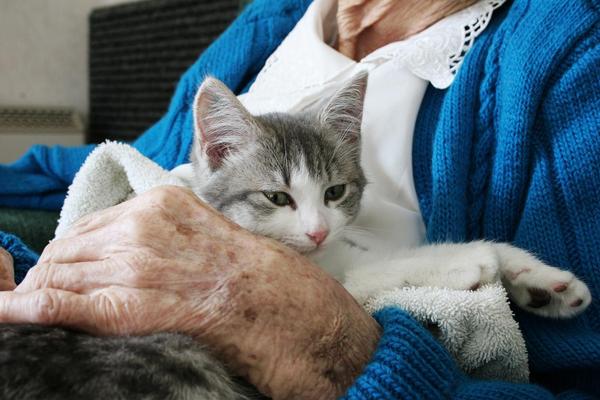Can Cats Be Therapy Animals?
Science Says Yes
When we think of therapy animals, dogs usually come to mind. But growing evidence — including a fascinating new study published in the journal Animals — suggests that some cats may be just as effective at reducing anxiety, providing comfort, and enhancing emotional well-being.
What Makes a Cat a Good Therapy Animal?
The study, published in the peer-reviewed journal Animals, found that successful therapy cats tended to have:
Low fear responses to loud noises or unfamiliar people
High levels of friendliness and sociability
Low aggression, even in stressful or novel environments
Tolerance of being handled, petted, and even picked up by strangers
These traits allow therapy cats to thrive in environments such as hospitals, nursing homes, and schools — places where calm, affectionate,
and emotionally attuned animals can make a real difference.
Interestingly, the study also found that cats involved in Animal-Assisted Interventions, including Animal-Assisted Therapy, Activities, and Education, were more likely to be purebreds and raised from kittenhood, suggesting that early socialization and breed characteristics may play a role in their therapeutic potential.
The Human Impact
Therapy
cats have been shown to reduce anxiety, promote social interaction, and offer emotional grounding to people dealing with trauma, illness, or social isolation. Their quiet presence can be especially soothing to individuals with dementia, PTSD, or chronic pain.
And unlike dogs, cats don’t require outdoor breaks or extensive training, making them a practical — and often underestimated — option for many settings.
The Healing Power of a Cat’s
Purr
Beyond behavior and temperament, cats may offer another, more subtle healing tool: their purr.
According to orthopedic researchers and anecdotal evidence from the medical community, a cat’s purr operates at a frequency between 25 and 150 Hz — a range shown to promote healing in bones, tendons, and muscles. Exposure to this frequency has been associated with:
Accelerated bone regeneration
Improved tendon and ligament repair
Enhanced joint flexibility and mobility
This helps explain why cat owners often describe a sense of physical relaxation and even pain relief when resting with a purring cat on their chest or lap. It’s not just emotional comfort — there may be a literal,
physical healing mechanism at work.
Why It Matters
In institutional or caregiving settings, these feline qualities can have outsized benefits:
For long-term care residents, a gentle, calm cat can offer companionship without overwhelming energy.
For children with autism or sensory processing differences, a therapy cat’s soothing
presence can help reduce anxiety.
For people recovering from trauma or illness, both the purring and the gentle attention of a cat can foster trust, relaxation, and recovery.
A New Era of Feline Therapy?
As the science evolves, more institutions may begin to recognize and utilize cats in formal therapy roles. Programs that train and certify therapy cats are still limited, but interest is
growing.
The next time you see a calm, friendly feline curled up in someone’s lap at a care facility, remember: that cat might not just be a pet — it could be part of someone’s healing.
Stay proactive. Stay prepared. Stay healthy.
If you or a loved one need assistance with estate planning or elder law matter, there's no better time than the present to start. Give us a call today to
ensure everything is properly arranged and to secure a future that aligns with your desires.
From Your Friends at The Farr Law Firm
Notice: This newsletter is published as a complimentary service of the Farr Law Firm. The information is for general informational purposes only and does not constitute legal advice. For specific legal questions, please consult with one of our experienced attorneys. We encourage you to share
this newsletter with anyone who may benefit from it.


